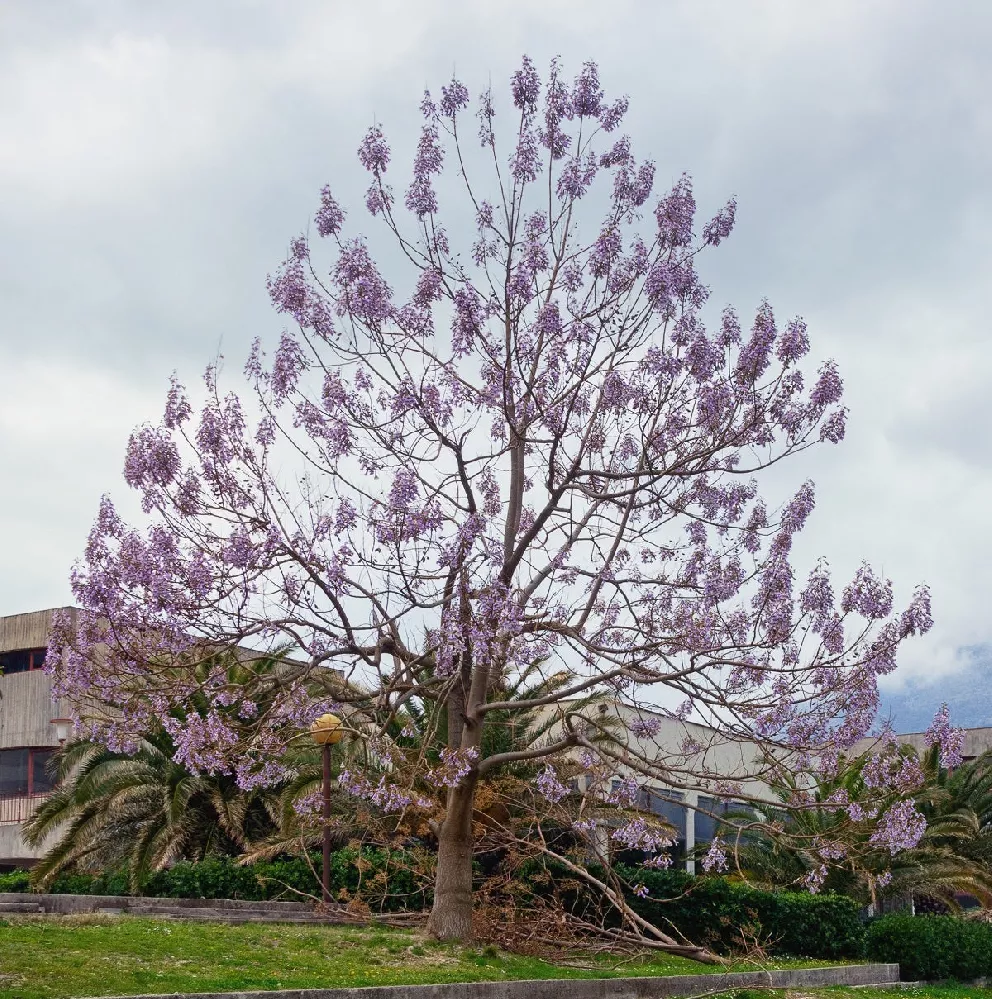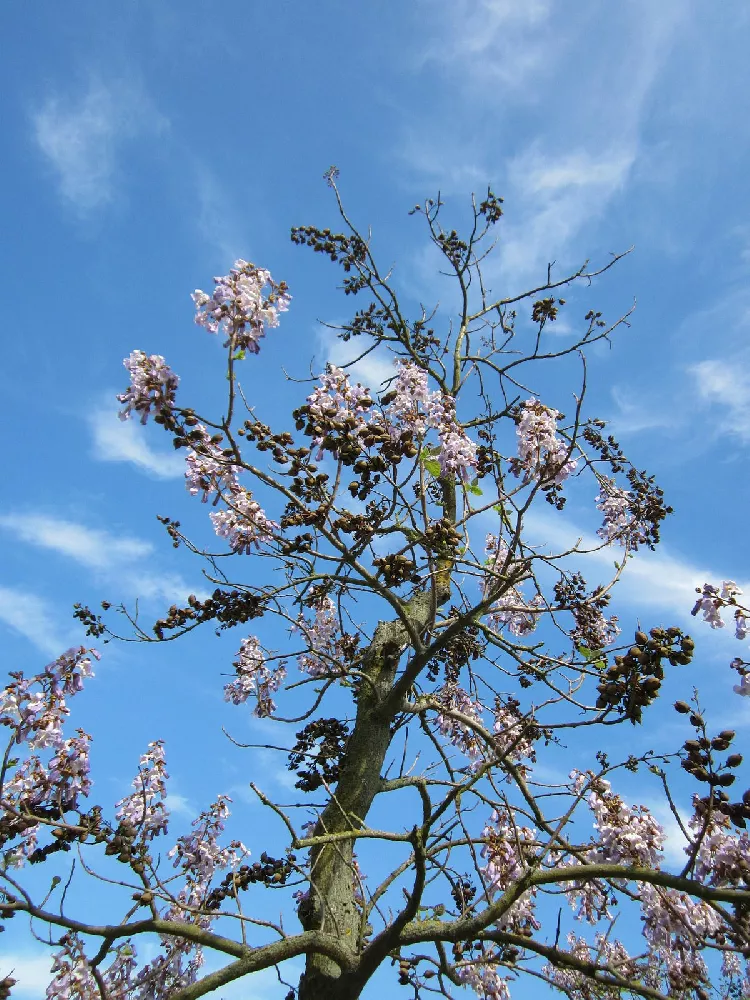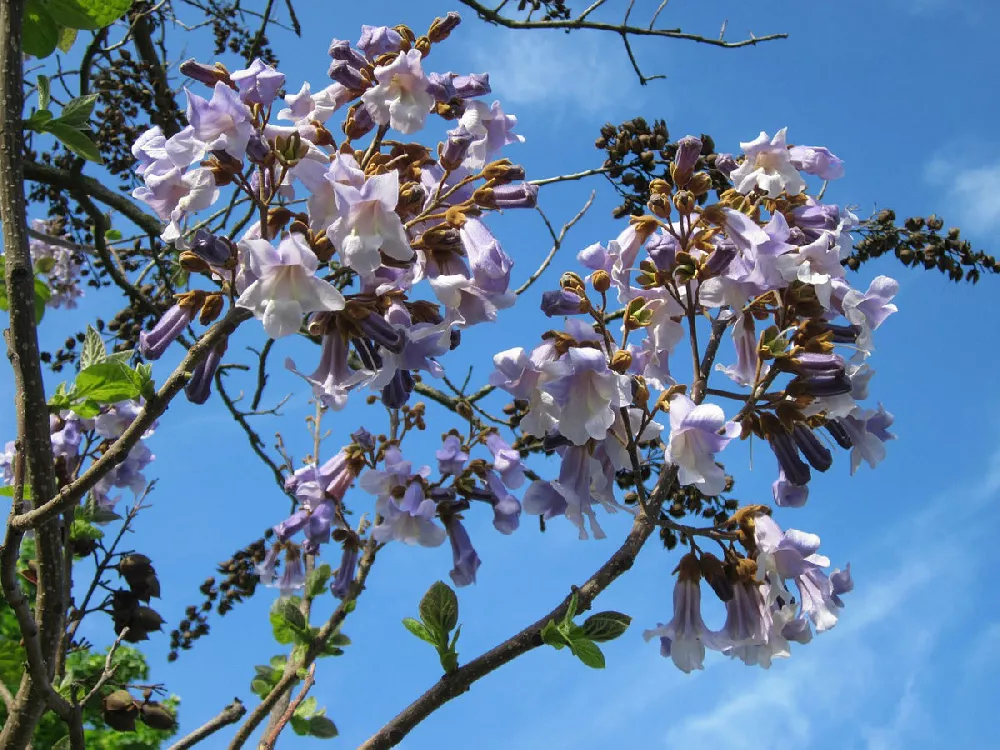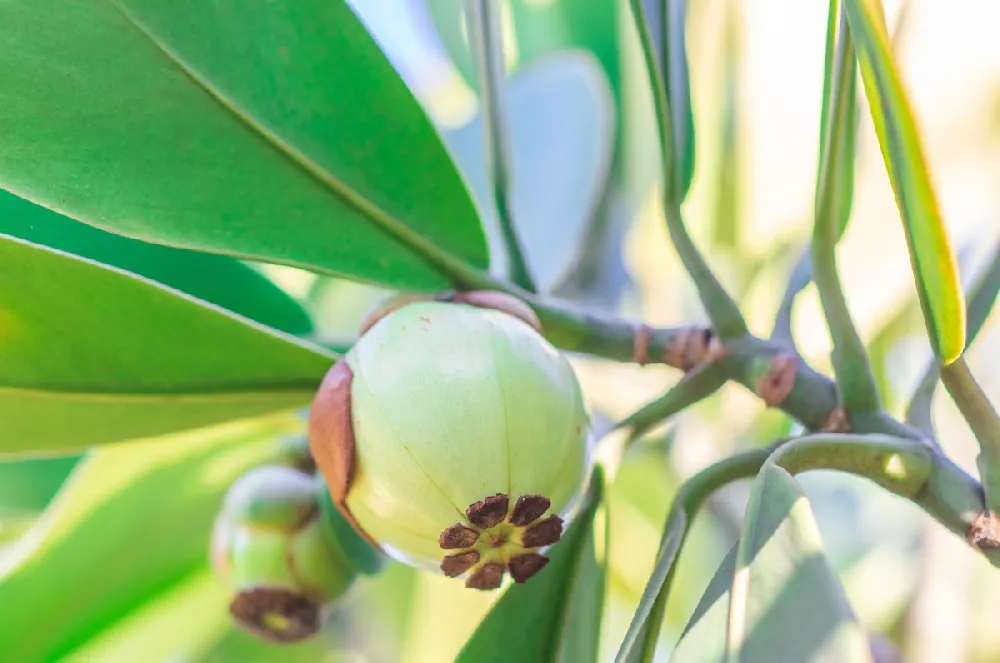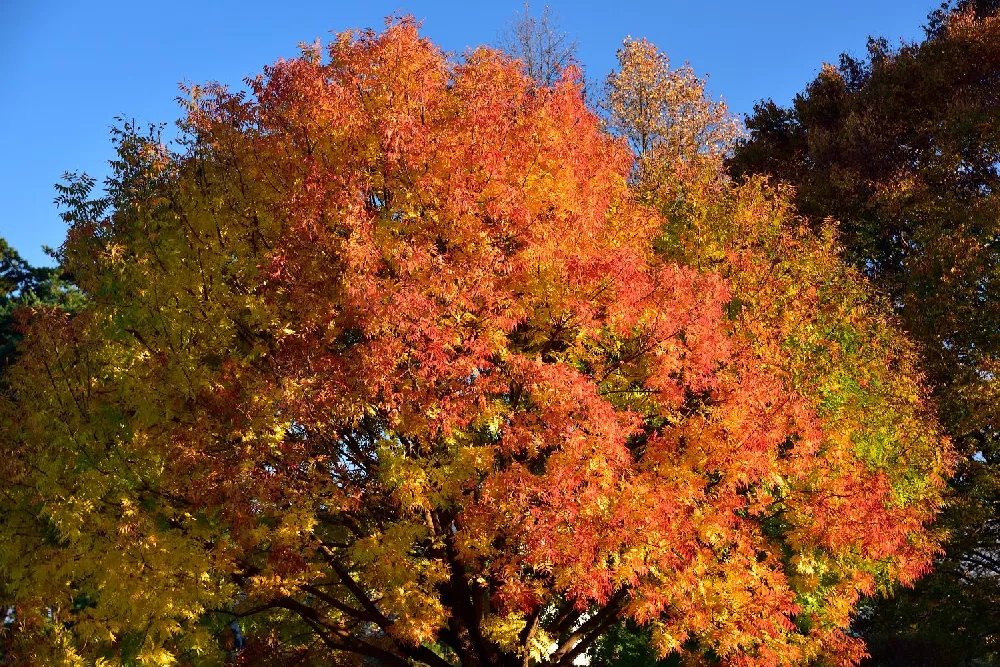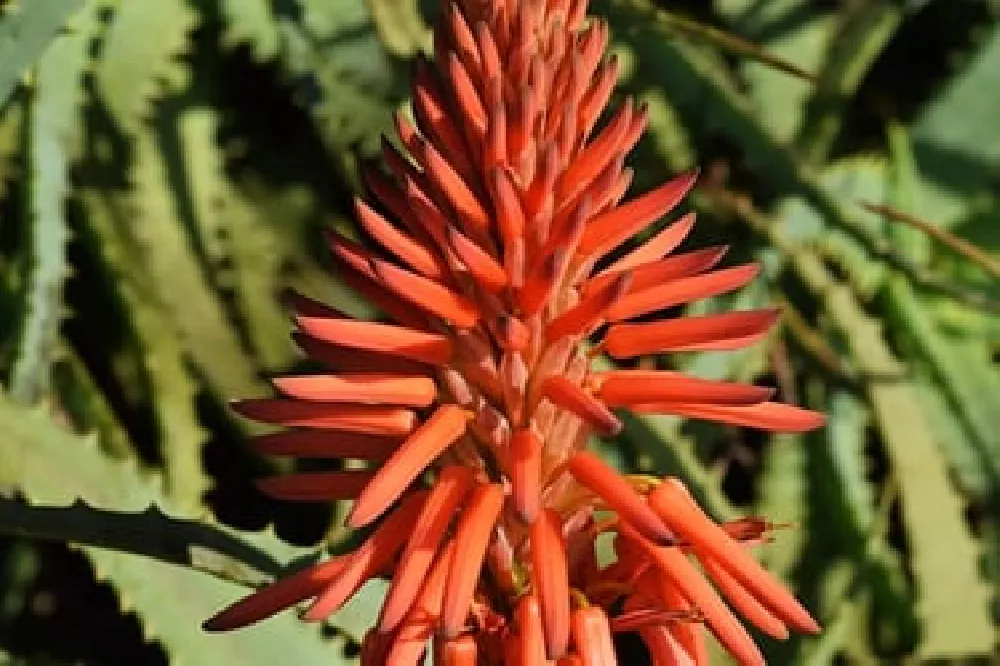- Home >
- Ornamental Plants >
- Royal Empress Trees
Royal Empress Trees for Sale - Buying & Growing Guide
Royal empress trees bloom in the spring with lavender-colored flowers that populate the entirety of the canopy. However, the impressive blooms are not the only eye-catching feature of this midsized ornamental tree: The leaves of this species are deciduous and can be as much as 12 inches wide. The scientific name for the royal empress tree, Paulownia tomentosa, honors Anna Paulowna of Russia and implies the regal beauty that this plant possesses.
- Purple spring-blooming flowers cover the canopy.
- Leaves are large, sometimes reaching 12 inches or more in diameter.
- Named for Anna Paulowna of Russia, queen consort of the Netherlands in the 1800s.
Enter your zip code to find nearby stores that may carry this plant.
Plant Care
Sunlight

Grows in full or partial shade conditions. Three to six hours of sun exposure per day.
Watering
Provide water once per week on average during the growing season.
Fertilizing

Prefers a nitrogen-heavy fertilizer. Apply fertilizer once or more per month during the active growing season.
Planting and Care
Planting instructions
Finding a location to plant a royal empress tree is not difficult. This species can survive in differing degrees of sun exposure and in a variety of soil conditions. What’s most helpful to remember is that the canopy of the royal empress tree spreads quickly, so you should give it plenty of room to do so. When this tree grows too close to a structure or pavement, its vigorous roots can do some serious damage. At planting time, dig a hole that is as deep as the root ball is tall and twice as wide. Ensure good soil drainage and provide plenty of water.
Watering and nutrients
Regular watering is essential to the development of your royal empress tree. This is especially true just after planting while it is attempting to establish itself in its new location. Water it once per week or more during the active growing season.
Like most trees, royal empress trees thrive in soil that is rich in organic matter and nutrients. Amending soil with compost or a similar material is an excellent way to give your tree the fuel it needs to grow. A monthly application of nitrogen-rich fertilizer can also be beneficial.
Pruning
One of the downsides of this tree’s rapid growth rate is that it can be weak-wooded at times. That weakness often leads to breakage. Fortunately, you can use pruning to help strengthen the form of your royal empress tree.
Prune in early spring and remove any branches that are broken or dead. Because this tree has such a vigorous growth habit, you can prune it hard. As long as you leave the main trunk and a few primary branches, your tree will most likely survive your pruning cuts.
Pests, diseases, and animals
You should not expect to have any problems with pests or diseases with a royal empress tree. Part of what makes these trees so invasive is that they are resilient and have few growing concerns.
However, there are some threats you should look out for. For example, if you value the flowers of this tree, you’ll want to protect it from the winter wind. Because the buds emerge in early spring, a late winter storm could freeze them in the absence of protection.
Achieving maximum results
In many states, the royal empress tree is one of the worst invasive species. Its seeds are plentiful and spread easily. For that reason, you should avoid doing further environmental harm by deciding against planting this tree if it is invasive where you live.
If this tree is not invasive where you live, you can enjoy all the advantages it has to offer. For instance, its flowers are not only incredibly visually appealing but also edible. Try adding them to your salads or any other dish you like.
FAQs
Why do people plant royal empress trees?
There are a few practical reasons why gardeners choose to grow royal empress trees. The most obvious reason is that these plants have some of the best floral displays of any species. The large leaves of royal empress trees make for excellent shade from the hot sun, and the rapid growth rate of this species makes it so you don't have to wait long to enjoy its benefits.
How fast do royal empress trees grow?
The royal empress tree has one of the fastest growth rates of any tree species. It can expand an incredible 15 feet in a single year. As soon as they are established, royal empress trees quickly spread their roots and branches to achieve a mature height of 40 to 50 feet, with a spread that is nearly as expansive. Amazingly, this species can also reach maturity in a decade or less. However, such a fast growth rate is the same reason why this tree causes some problems in certain regions.
Are royal empress trees invasive?
Royal empress trees come from China but have since spread throughout the world. Today, this tree grows in many parts of North America and Europe. In the former location, this plant is more commonly classified as an invasive species because of how quickly it grows and competes with native species. However, the invasive status of this species does vary. For instance, it is far less of an issue in European countries than it is in the U.S. and Canada.
Compare Similar Products
You can't add more Product Name - Product size to the cart.
OK